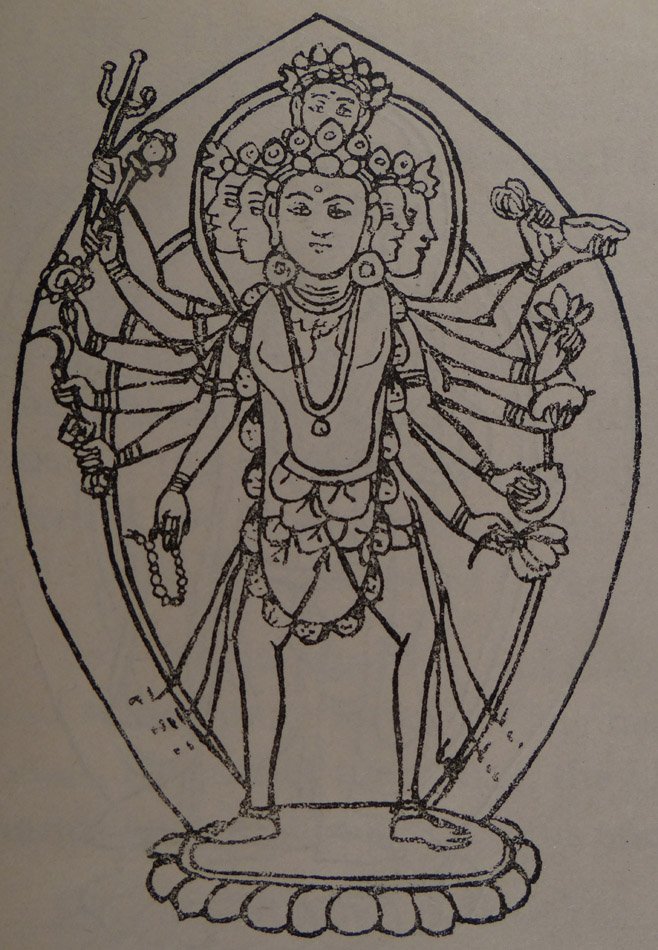The Indian Buddhist Iconography
by Benoytosh Bhattachacharyya | 1958 | 51,392 words | ISBN-10: 8173053138 | ISBN-13: 9788173053139
This page contains an iconography image of 108 forms of Avalokiteshvara (5): Mayajalakrama Lokeshvara and represents of the book Indian Buddhist Iconography, based on extracts of the Sadhanamala English translation. These plates and illustrations represent either photographs of sculptures or line-drawing reproductions of paintings or other representations of Buddhist artwork.
108 forms of Avalokiteśvara (5): Māyājālakrama Lokeśvara

Fig. 5A: Māyājālakrama Lokeśvara
This is figure 5 in a series of 108 forms of Avalokiteśvara from the Macchandar Vahal, Kathmandu, Nepal.
5. Māyājālakrama Lokeśvara. He has five faces and twelve arms. The head on the top probably represents Amitābha. He stands in the Ālīḍha attitude, and wears the tiger-skin and the garland of heads, but his faces do not present a fearful appearance. The six right hands carry the Tridaṇḍī, the Khaṭvāṅga, the jewel, the Khaḍga, the Vajra and the rosary, and the six left show the noose, the Kapāla, the Utpala, the fruit, the Cakra and the lotus.
The Bodhisattva Avalokiteśvara (The Watchful Lord) also called Padmapāṇi (Lotus bearer) is the spiritual son of the Dhyāni Buddha Amitābha. He is one of the most popular Bodhisattvas of the Buddhist Pantheon having as many as 108 different forms [viz., Māyājālakrama Lokeśvara].
